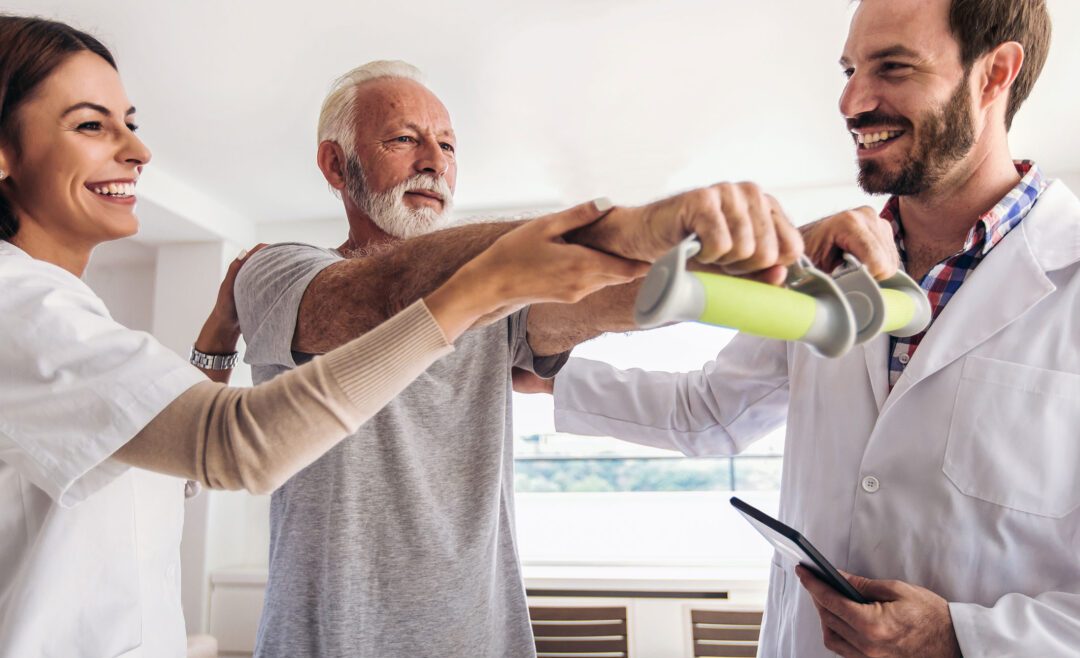Did you know that Leading Edge Senior Care has a Dementia Support Group? We meet monthly in Mesa. For more details <click here>
The Journey of Stroke Recovery
The journey of stroke recovery can be a daunting experience. When a stroke happens, the blood supply in the brain becomes jeopardized, which results in damage to parts of the brain tissue. This damage is the cause of incidental effects like weakness on one side of the body, difficulty with speech, or other secondary effects.
Stroke rehabilitation is basically to improve the secondary effects that occurred from the stroke. This is why right after a stroke occurs, the person receives different therapies in rehab like physical, occupational, and speech therapy. When in a rehab facility, you have a team of therapists working with you to begin the rehabilitation process and guide you through to process on what to expect. This is only the beginning of the road to recovery, once home you must continue a consistent rehab program.
At Home Recovery
Stroke recovery is definitely a journey that can be a long one; every person is different so recovery time will be also. Another factor for recovery is how many areas have been affected. Part of the process is recognizing that the brain has the capabilities to heal itself. This process is known as neuroplasticity. Neuroplasticity is your brain rewiring itself, the brain’s ability to change and adapt as a result of experience. Through a repetitive and diligent program, the secondary effects can be partially and at times fully remedied.
The Journey of Stroke Recovery
Stroke recovery at home allows for a rehabilitation program to be developed and personalized for your individual needs. Being at home, you can practice skills that will assist you in your daily living needs and your environment. Functioning in your living environment will encourage you to become more independent each day of the process.
It is vital in the journey to fully understand the signs of stroke recovery. This will help keep a positive mindset, plus appreciate and celebrate each victory. Recapturing abilities post-stroke is not a small deal, it is a big deal and should be recognized.
Signs of Progress
Remember just as every person is different so is the recovery. The recovery process will be different for each person, which in turn the signs of progress will differ. You should make a list of your recovery goals and keep track of your progress.
Below are a few patterns that can occur during stroke recovery:
- Increased independence with ADLs (activities of daily living)
After a stroke, you may need assistance with eating, getting dressed, or bathing. These tasks are referred to as ADLs. As you become independent with any of these tasks, this is a sign of progress and should be celebrated. You are advancing through your journey to recovery and are becoming more independent in everyday life.
- Tiredness can be a sign of recovery
Tiredness after stroke is common. The brain sustained a trauma; it takes energy to heal. Therefore you may experience excessive sleepiness. Sleep allows your brain to recover and promote neuroplasticity. This may need that your brain is working hard and needs the rest to recuperate. Always listen to your body and sleep when it is needed unless taking naps begin to interfere with your sleep at night. Getting plenty of sleep is recommended when rehabilitating.
What is Spasticity?
- Spasticity Appears
The brain and muscles are starting to reconnect, and this means that the muscles are getting stimulated again. The increased spasticity should be seen as progress because it means the neural connections between your brain and muscles are improving.
Under normal circumstances, your muscles and brain are in constant communication. Your muscles tell the brain how much tension they’re under, and your brain tells your muscles how and when to move. When a neurological injury such as a stroke damages the areas of the brain that control movement, it can impair the brain’s ability to communicate with the affected muscles.
Always stay positive and active through the journey to stroke recovery. Follow these tips as you go through your journey:
- Complete Your Exercises every day
Follow your exercise program each day. This is how your brain will rewire itself and you will become stronger.
- Adjust your Goals as you Progress
Always keep yourself challenged. Once you hit a goal, make a new goal. Therefore don’t set yourself up for failure by setting your goals too high, but at the same time do not set them too low because this will not help you reach your recovery goals.
- Keep a Journal
Seeing your progress will help in your recovery and understanding your progress. Every positive improvement make sure you celebrate it and never forget the importance of each achievement.
Transitioning home from a rehab facility or hospital? This is what every senior and family needs to know about transitional care <TRANSITIONAL CARE>
Your journey of recovery from a stroke begins the moment you get home. A custom care plan for seniors is critical in the days, weeks, and months to come! See how a custom care solution can be put in place for you!

